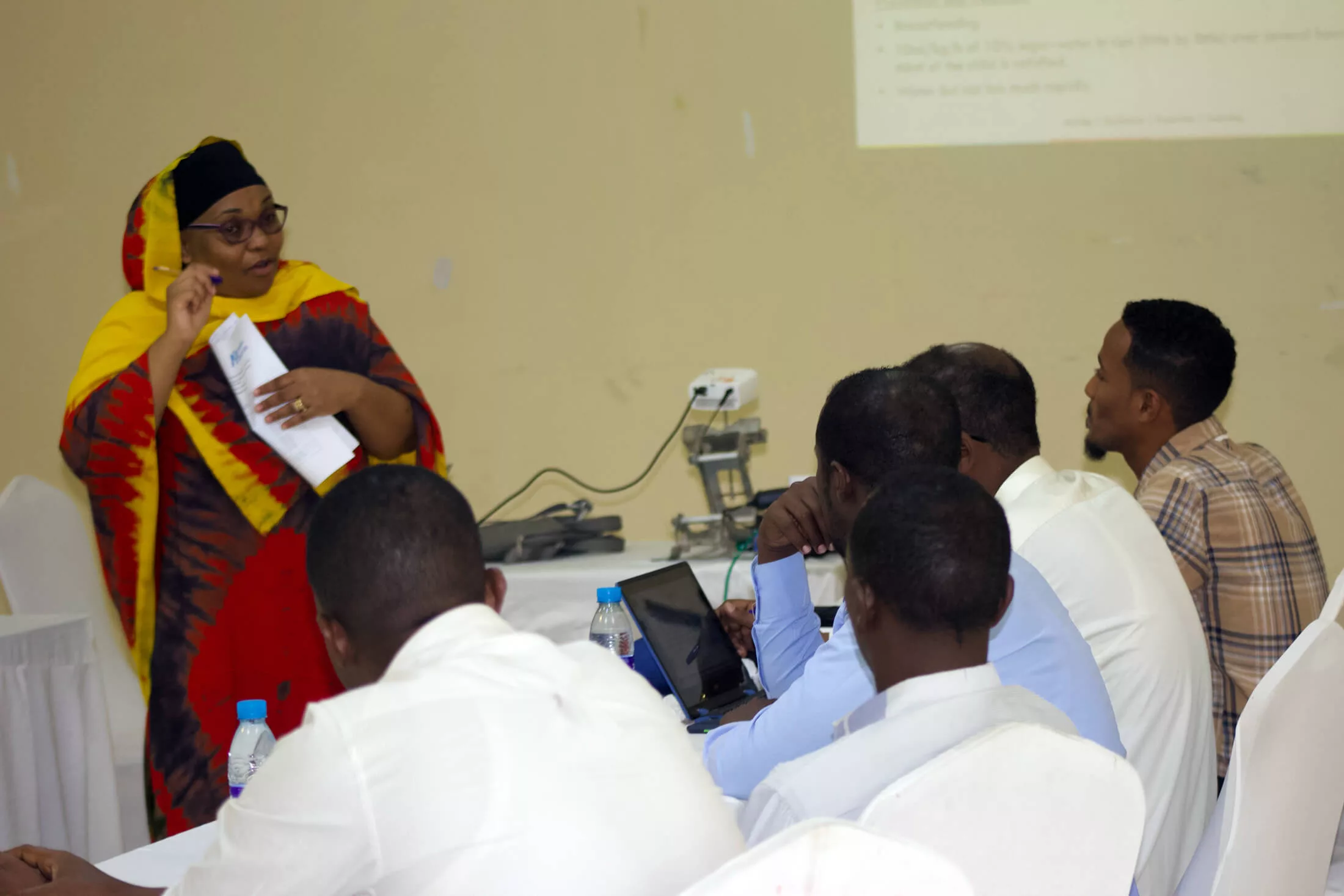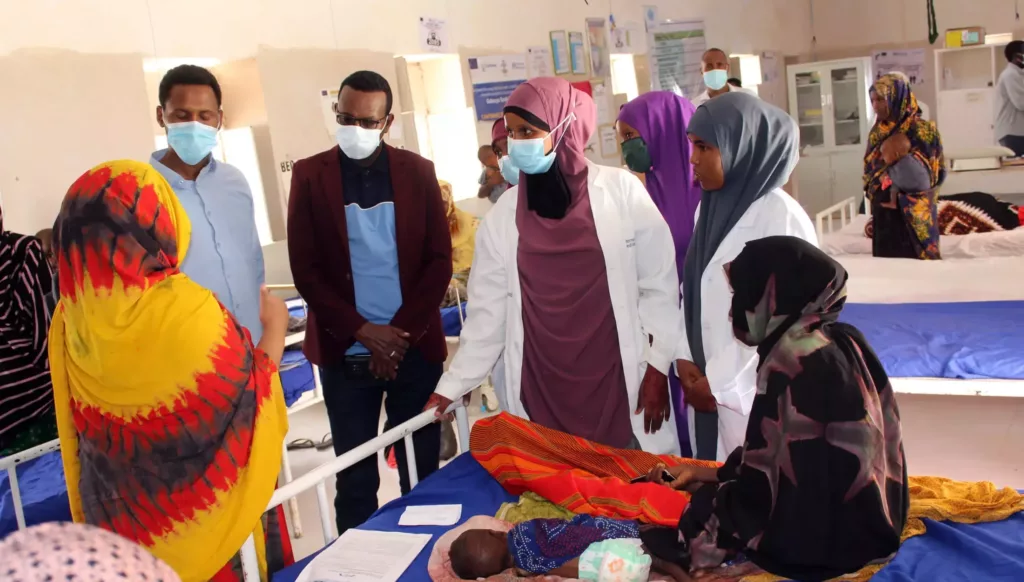“I just love trying out new things that will bring about a good change and bring something positive to the communities that we serve,” says Naomi Mwikali Ndung’u, Nutrition Coordinator for our Somalia mission.
Naomi’s love of experimentation led to a highly successful integrated community case management (iCCM plus) project in 2021. iCCM plus is a community health strategy that organizations use to train community health workers (CHWs) and provide them with resources to treat children for pneumonia, diarrhea and malaria, as well as severe acute malnutrition (SAM) without medical complications, during home visits—preventing the family from needing to visit a health facility. Although the strategy has been used in other parts of Africa, iCCM plus is relatively new in Somalia, and Naomi suggested trying the approach there.
Naomi and her team wrote a successful grant proposal that ultimately funded the iCCM project as a pilot in three villages in the Jowhar area, located near Mogadishu. The pilot came at an opportune time, running from late 2021 to summer 2022—as clinics were still trying to prevent crowding and lower the spread of COVID-19. At the start of the pilot, Naomi’s team trained 15 CHWs on how to treat the three diseases and SAM, as well as on how to follow up with households each week. The CHWs remained assigned to the same households throughout the project so that they could learn everything about their families—who was sick in the home, whether someone had died or whether a new baby had been born.

Although she had high hopes for the project, she wasn’t sure whether it would succeed. “Somalia is a very different context,” she says. “What works somewhere else in the world might not work at all in Somalia.”
But the pilot was a stunning success. While the program was running, the area experienced an outbreak of acute watery diarrhea. The villages where we were testing iCCM plus did not have a single child referred to the local hospital for in-patient treatment, because the CHWs were able to catch and treat the diarrhea before it got worse. “We found that iCCM plus is actually more effective than the traditional community-based management of acute malnutrition programming,” Naomi says, referring to a commonly used nutrition strategy for treating malnutrition.
Despite the pilot’s success—UNICEF asked the team to present the project to other global NGOs, and some donors are now asking implementing partners to employ this strategy as a way to increase coverage in hard-to-reach areas—there are issues that prevent our team from scaling the program up. CHWs need to be able to regularly access a store of nutrition supplies, but many of the parts of Somalia that are in the greatest need of help are difficult to access and lack proper facilities where such supplies can be safely stored. “That is something we are exploring, to see if we can do it in the next funding cycle,” Naomi says.
Capacity Building in Somalia
With hunger becoming an increasing problem in Somalia, Naomi finds herself writing a lot more grant proposals these days. When she goes to the field to provide supervision to staff, she says, she finds that the team is much busier now because there are more beneficiaries. “Resources are seriously stretched,” she says.
One recent source of funding came from the Global Nutrition Cluster, which provided our nutrition team with funding to train local organizations. Somalia has a large number of national organizations that can more easily access the areas that international organizations cannot, but many of these local organizations have capacity problems because their staff can’t get the training they need to implement their projects. International Medical Corps and the Global Nutrition Cluster (GNC) provided training to 22 organizations that run stabilization centers where children with severe acute malnutrition and medical complications can come for inpatient treatment. Because many staff in these centers lack proper training, children with malnutrition often do not receive the care they need.

“The way you treat a child who has severe acute malnutrition with a respiratory disorder is not the same as how you would treat a respiratory disorder in a child who is not malnourished,” Naomi says. “Many of these children end up dying because the doctors are not aware of how to treat them. So this training is very important.”
Most of the people who received training were stabilization center doctors—and many of them were shocked by how much they learned.
“It felt so good by the end of that training,” Naomi says. “Participants were like, ‘Wow, we actually did not know half of these things.’”
The team also trained facilitators who could later train other local organizations in the Somali language. They received a second round of funding from GNC to continue the capacity-building initiative by training local partners. The team conducted a second training for 23 local organizations in May and June 2023, and followed up with 13 of the organizations with on-the-job training in September. They were unable to reach the other 10 organizations because of security reasons.
The Somalia Nutrition department’s successes are all the more impressive when you consider that Nutrition was just a small segment of the Health team when Naomi joined International Medical Corps five years ago. “I’ve worked hard to make sure that Nutrition is more integrated within the health services than ever before,” Naomi says.
Similar Approach in Sudan
International Medical Corps launched a similar iCCM approach in Sudan, training 26 CHWs to use ready-to-use therapeutic food (RUTF) to treat children with severe acute malnutrition at the community level. Before this initiative, the CHWs had already been trained to screen and identify malnourished children using a mid-upper arm circumference measurement, but with iCCM, they were trained to treat those children with RUTF and refer those with moderate acute malnutrition or medical complications for further treatment.
